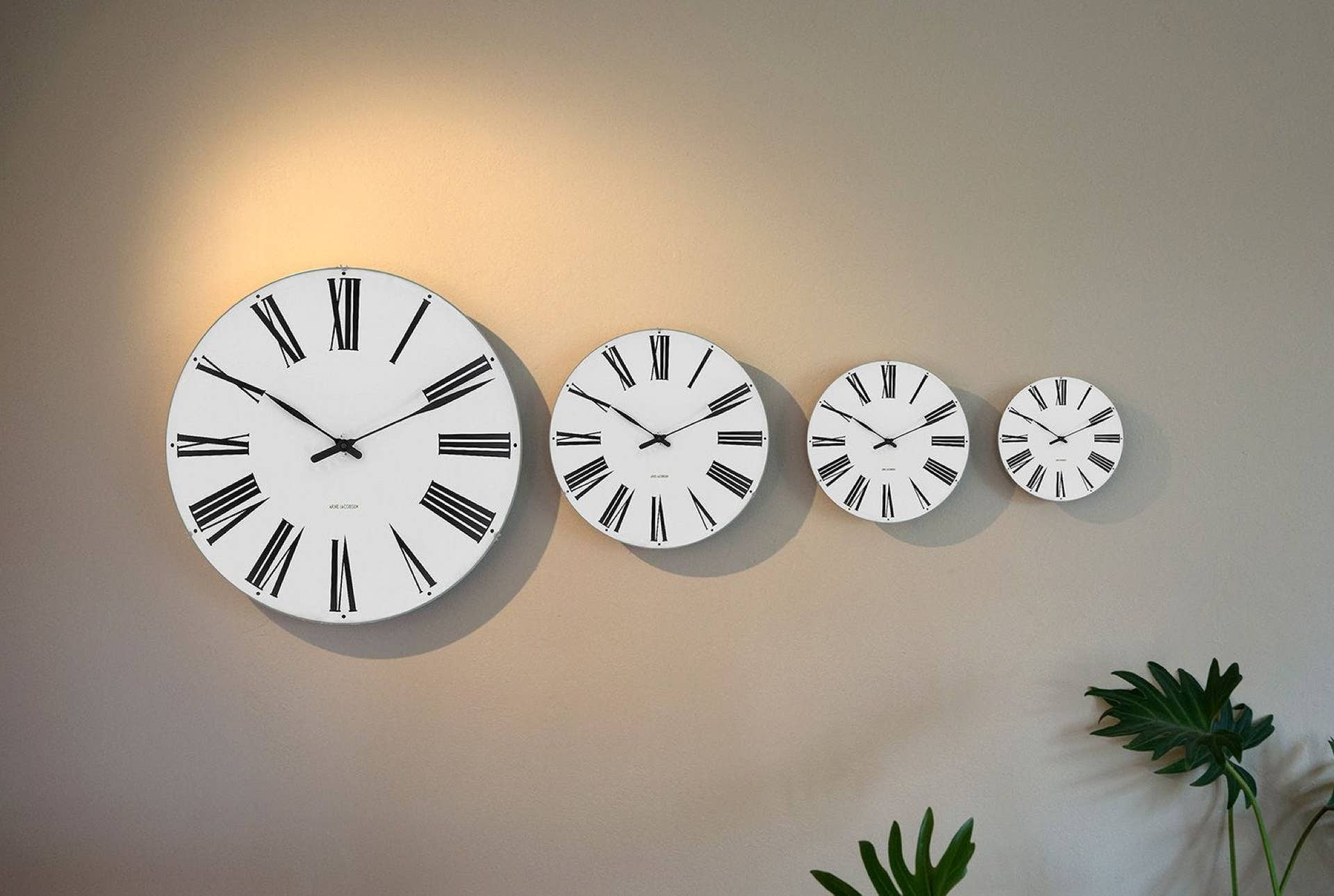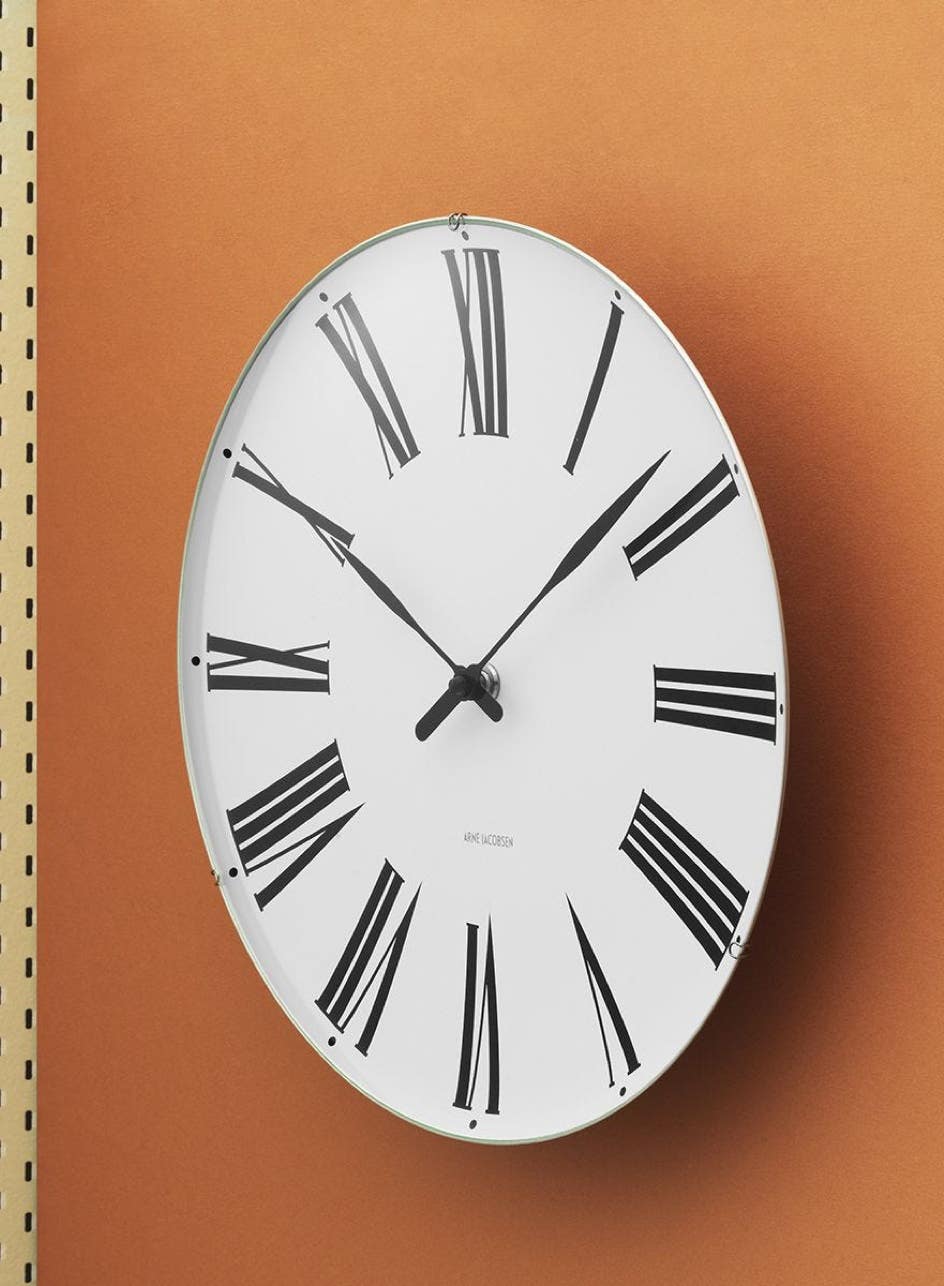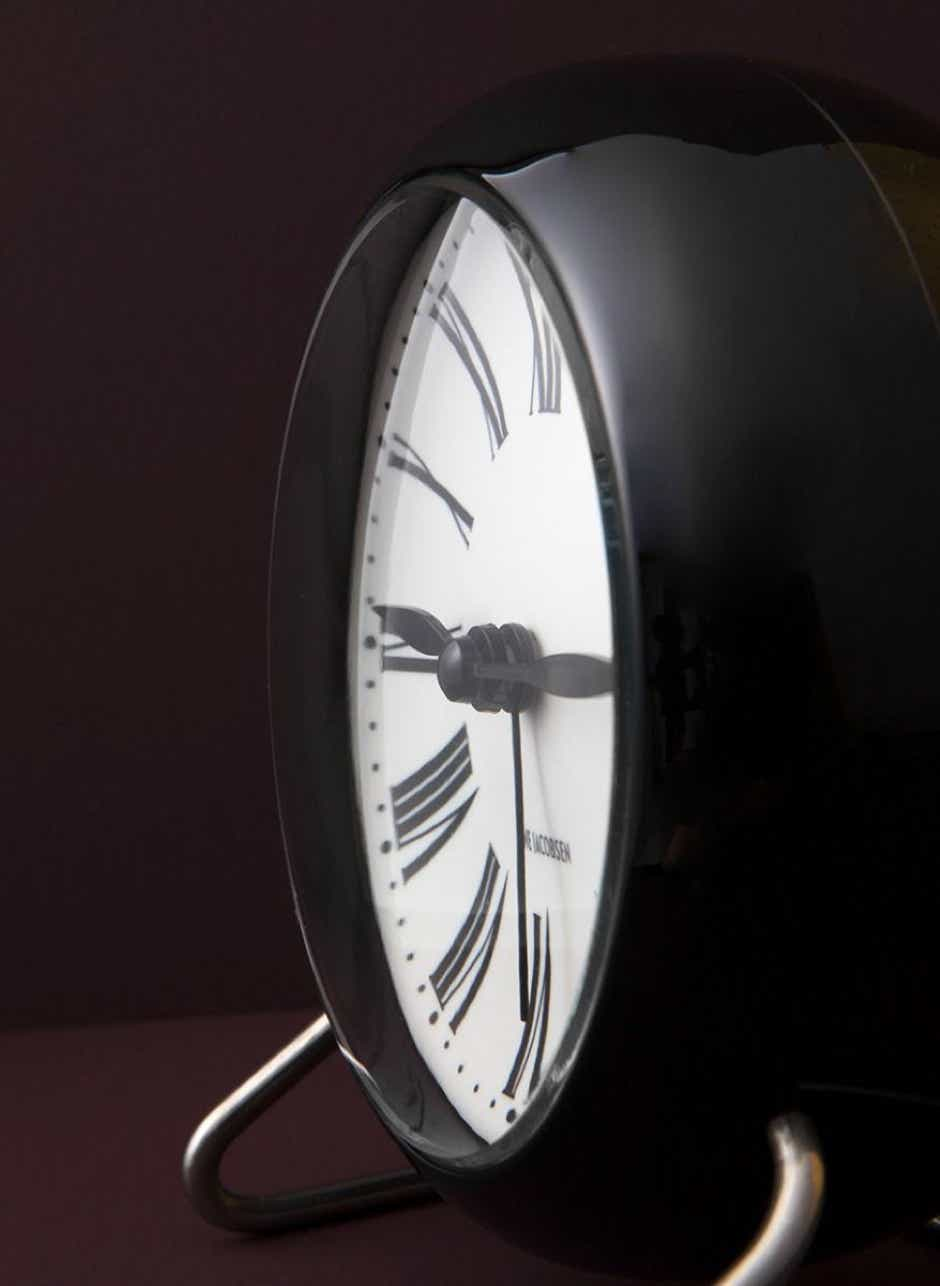
The Roman wall clocks and alarm clock, as well as the entire collection of watches, takes its name from the elegant clock that today decorates the tower of the town hall of Aarhus in Denmark, designed by Arne Jacobsen and Erik Møller in 1942. Initially, their proposal did not include a tower to support the clock.
Indeed, according to Arne Jacobsen's design philosophy, a tower has no real function. Consequently, the latter had no place in design, and therefore in modern functionalist creation. However, to public outcry, the two architects had to add a 60-meter tower that has since supported the famous Roman clock.


Wall clocks material Mineral glass lens. Movement RYTHME or SKP (Ø48 cm version) Japanese movement. Battery AA 1,5V. Case in aluminium. Batteries not included.
Alarm clock material Crack resistant lens. Case in ABS. Foot in solid stainless steel. Special IC alarm and sound. LED light. Battery 2 pcs. AA 1,5V. Batteries not included.
Ø11 cm
Arne Jacobsen
Arne Jacobsen was born on February 11, 1902 in Copenhagen. His father, Johan Jacobsen, was a wholesale trader in safety pins and snaps. His mother, Pouline Jacobsen, a bank clerk, enjoys painting flowers in her spare time. The family lives in a typically Victorian house, with very elaborate decoration. As a reaction, young Arne paints his whole room white.
He meets the Lassen brothers at the boarding school of Nærum. Flemming Lassen would become his partner in a series of architectural projects. Arne is a restless student, always ready to play pranks, making fun of himself. From his childhood, he showed an extraordinary talent for drawing and liked to represent nature in a very realistic way. He wants to be a painter, but his father thinks that the architect is a better choice (history will thank him for it).
He begins to travel at the age of 20 with a boat trip to New York. Then Germany to learn masonry, and Italy to observe architecture. He produced some of his most beautiful watercolors there, rendering atmospheres and materials with delight. Curiosity for foreign countries will be a constant in his career, without abandoning Denmark and its traditions.
Jacobsen's personality is reflected in his production: sharp modernist, tireless perfectionist, but also nature lover and jovial family man: like him, his work is precise and warm, Danish and universal, modern and timeless.